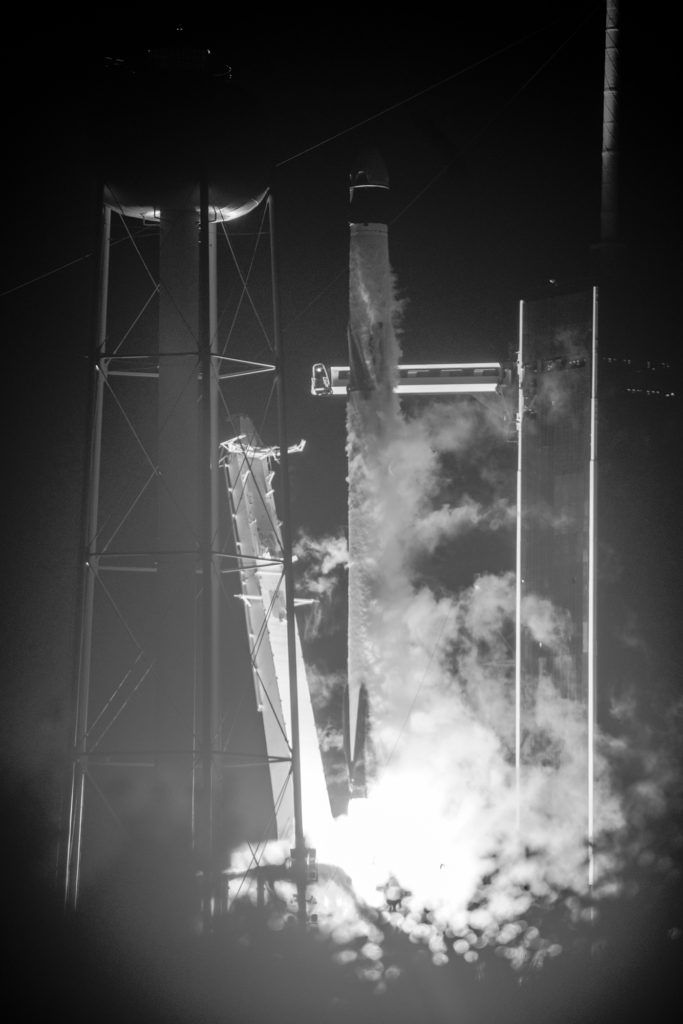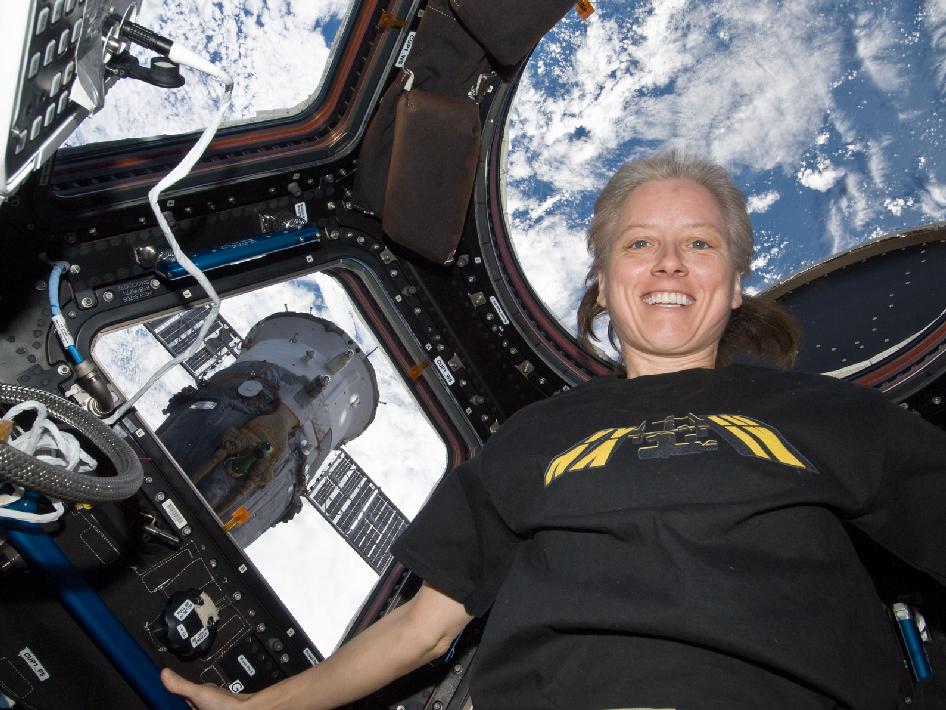Liftoff! Resilience rises as NASA and SpaceX send four humans to space.
video credit: Ryan Chylinski, cosmicperspective.com
"Resilience rises! Not even gravity contains humanity when we explore as one for all."
Marie Lewis, NASA
At 7:27pm ET on November 15, the four astronauts launched atop a SpaceX Falcon 9 rocket, inside a brand new SpaceX Crew Dragon capsule, from Launch Complex 39A at Kennedy Space Center. This historic launch ushered in a new era of human spaceflight to Florida’s Space Coast, the birthplace of NASA.
When four humans left Earth last night, they took us with them... and as Falcon neared main engine cutoff, beautiful nebula colors formed in the sky 🌌📽️ #Crew1
— Cosmic Perspective (@considercosmos) November 16, 2020
“Not even gravity contains humanity when we explore as one for all” https://t.co/C9UE7gs1bj@NASA @SpaceX @elonmusk pic.twitter.com/14air42I4l
video credit: Ryan Chylinski, cosmicperspective.com
Relive the moment
We were poised just a few miles away from the launchpad, tracking liftoff with a telescope. Emotions were high as we watched these humans take off for space.
We sent our telescopic views to Everyday Astronaut’s YouTube live stream and, just moments before and after liftoff, we reported live from the launch site, full of emotion, during the Space For Humanity launch party.
Video: Ryan Chylinski, cosmicperspective.com / Original footage: NASA
Video & Footage: Ryan Chylinski, cosmicperspective.com
Stay Connected

Photo Credit: Ryan Chylinski, cosmicperspective.com

Photo Credit: Ryan Chylinski, cosmicperspective.com

Photo Credit: Ryan Chylinski, cosmicperspective.com
A warm welcome to the International Space Station
The Falcon 9 sent the crew of four on a journey to the International Space Station (ISS), where they docked at about 11pm ET on Monday, November 16, 2020. Meanwhile, inside the station, NASA astronaut Kate Rubins worked through the several task lists required to prepare to welcome them inside. At about 1:20pm ET on November 17, 2020, she opened the hatch, and Mike, Victor, Shannon, and Soichi floated in for a jubilant embrace and heartfelt welcome ceremony.
A Maxed-Out Crew on The Station
Upon arriving at the ISS, the Crew-1 astronauts joined the Expedition 64 crew. Kate Rubins, Sergey Ryzhikov, and Sergey Kud-Sverchkov arrived at the Station via a Russian Soyuz capsule on October 14, 2020. There are now seven crew members aboard the International Space Station, which only has six tiny crew quarters. This fact did not put a damper on the crew’s excitement for all of the added work and science research they’ll complete with extra hands onboard.
During a recent press conference, they passionately explained that they will spend six months conducting science research and experiments that work to “improve life on Earth, prepare us to expand human presence in deep space, and work to answer the big questions about our place in the universe.”
A mission of Resilience
“If you look at our patch, you’ll notice that on the border, there are no names, there are no flags. And that was by design because [it] doesn’t just represent the 4 of us... That same theme applies to the name of this vehicle, Resilience. It is a connection to all of you, to everybody... we hope it’s an inspiration that shows that when you work together, there is no limit to what you can achieve.”
-NASA ASTRONAUT MICHAEL HOPKINS
Celebrating 20 years of humans in space
Every single day for the last twenty years, humans have continuously been living and working in space aboard the International Space Station. During a recent press conference, the crew discussed their reverence and excitement for the fact that their mission is taking place during this historic celebration.
"Being on the Station during the 20th year anniversary of human presence on ISS is a real honor…"
-NASA ASTRONAUT MICHAEL HOPKINS
Taking our humanity to space
In a recent interview with former astronaut Nicole Stott, she expressed her gratitude that someone convinced her to take her humanity with her on her human spaceflight. For her, that meant bringing a watercolor paint kit and painting in space. Since learning this, I’ve remained fascinated by the ways in which all of the other busy astronauts choose to stay grounded and sane during their time in space.
I asked the Crew-1 astronauts if they were bringing anything special with them, or if they had thought about how they plan to spend their personal time. Some were bringing religious items to keep them grounded, while others simply want to spend all of their free time gazing out the window.

“I’ve thought about how I’ll spend my time looking out the window and communicating the perspective to others… communicating that experience is important to all of us.”
NASA ASTRONAUT SHANNON WALKER
A major step for SpaceX's plan to "Make life multi-planetary"
This mission is a major milestone for SpaceX, who is providing both the launch vehicle—the Falcon 9 rocket—and the Crew Dragon capsule. Following the success of the DM2 mission, Crew 1 marks the second-ever human SpaceX mission, which is central to SpaceX’s purpose: to make life multi-planetary.
Meanwhile, SpaceX continues to make swift progress on the Starship prototype at their Boca Chica test facility. While Crew Dragon gives SpaceX the practice and expertise they need to send humans regularly to space, Starship will be the super heavy rocket that eventually takes hundreds of people to the Moon, Mars, and even point-to-point destinations on Earth.
Soon, we will head to Brownsville, Texas to document the Starships SN8 test flight—a major milestone in the Starship prototyping process.




